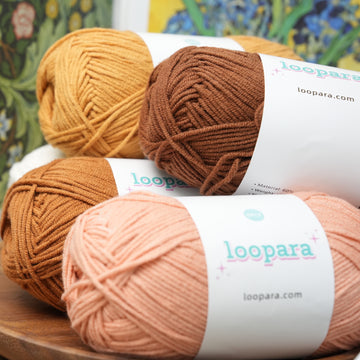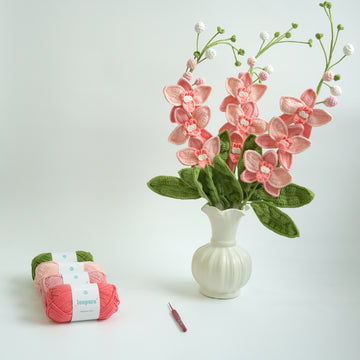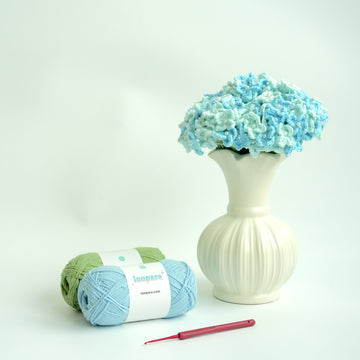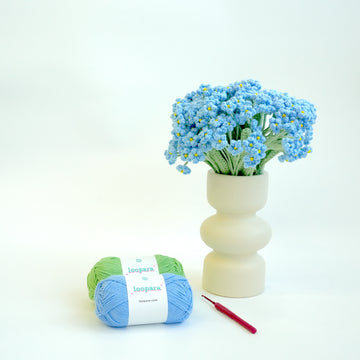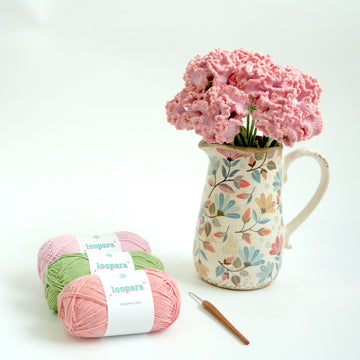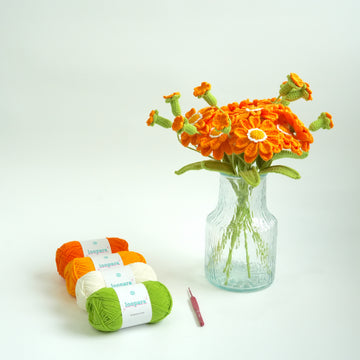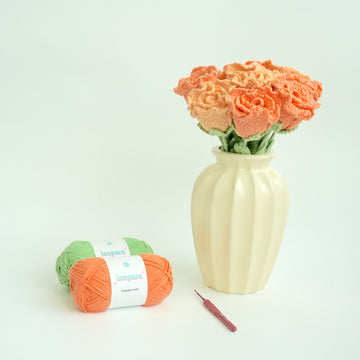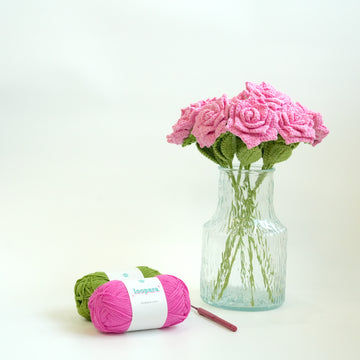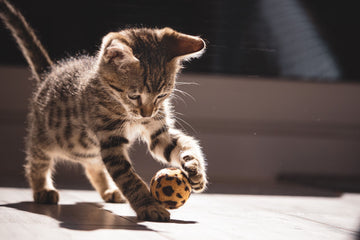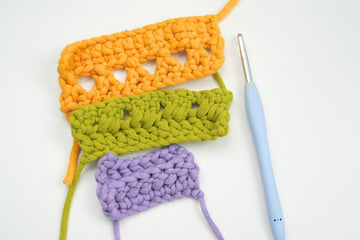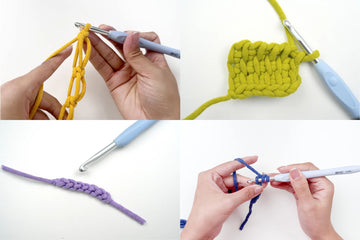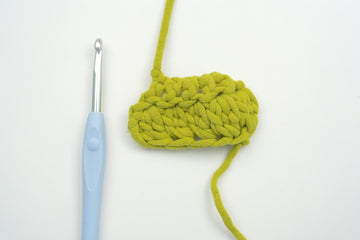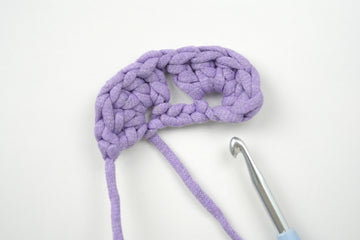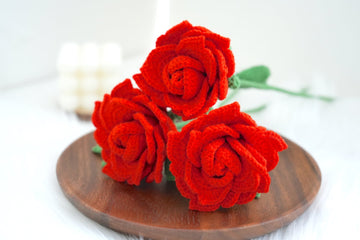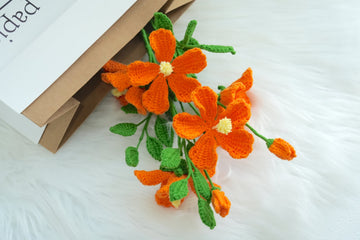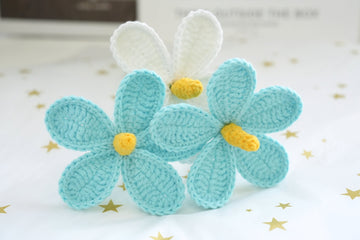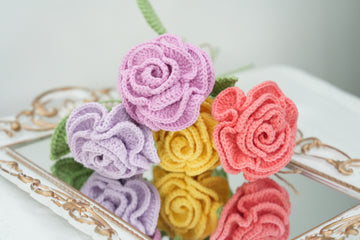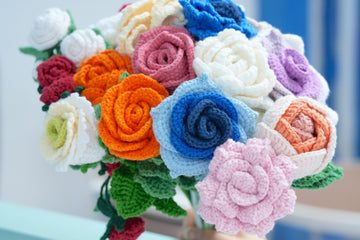Crochet offers a world of creativity through various stitches. This list introduces 44 different types of crochet stitches, sorted by difficulty, with brief descriptions of their purpose and effect. Whether you're a beginner or an expert, there's always a new stitch to master!
Pin for Later
Pin this comprehensive crochet stitch guide for later – you'll want to refer back to it as you grow your skills!

1. How to hold crochet hook and yarn
Difficulty: Beginner
Fundamental technique for all crochet work. Used to maintain tension and control. Proper grip ensures consistent stitch size and reduces hand fatigue during crocheting.
Check Step by Step image and Video tutorial here.
2. Chain stitch (ch)
Difficulty: Beginner
The foundation of most crochet projects. Creates a chain of loops that forms the starting point for rows or rounds. Produces a flexible, rope-like structure used in edgings or as decorative elements.
Check Step by Step image and Video tutorial here.
3. Slip stitch crochet (sl st)
Difficulty: Beginner
A simple joining stitch that creates a flat, nearly invisible seam. Used to connect pieces, finish off rounds, or create subtle texture. Produces a tight, compact fabric ideal for edges and closures.
Check Step by Step image and Video tutorial here.
4. Single crochet (sc)
Difficulty: Beginner
A basic, versatile stitch that creates a dense, sturdy fabric. Used for amigurumi, bags, and items needing structure. Produces a tight, textured surface suitable for everyday items and decorative patterns.
Check Step by Step image and Video tutorial here.
5. Double crochet (dc)
Difficulty: Beginner
A taller stitch that works up quickly. Used for blankets, garments, and lacy patterns. Produces a more open, drapey fabric with good stitch definition, ideal for creating intricate designs.
Check Step by Step image and Video tutorial here.
6. Half double crochet (hdc)
Difficulty: Beginner
A medium-height stitch balancing single and double crochet. Used for hats, scarves, and blankets. Produces a firm yet flexible fabric with a nice drape, suitable for various projects.
Check Step by Step image and Video tutorial here.
7. Treble crochet (tr)
Difficulty: Beginner to Intermediate
Also known as triple crochet in US terms. A tall stitch that creates an open, lacy fabric. Used for shawls, doilies, and decorative edgings. Produces an airy, delicate texture ideal for lightweight garments and intricate lacework patterns. Its height allows for quick project completion and dramatic stitch patterns.
Check Step by Step image and Video tutorial here.
8. Magic ring crochet
Difficulty: Beginner to Intermediate
Also called magic circle or adjustable ring. A technique for starting projects worked in the round. Used for amigurumi, hats, and circular motifs. Produces a tight, adjustable center that eliminates holes in round projects. This method allows for a neater finish compared to traditional starting chains for circular projects.
Check Step by Step image and Video tutorial here.
9. Single crochet increase (sc inc)
Difficulty: Beginner to Intermediate
A technique to add stitches and expand fabric. Used in shaping round or curved pieces. Produces gradual widening in projects like amigurumi, hats, and circular blankets.
Check Step by Step image and Video tutorial here.
10. Single crochet 2 together (sc2tog)
Difficulty: Beginner to Intermediate
A decrease technique combining two stitches into one. Used for shaping and reducing stitch count. Produces a smooth, nearly invisible decrease in amigurumi, garments, and shaped projects.
Check Step by Step image and Video tutorial here.
11. Half double crochet increase (hdc inc)
Difficulty: Beginner to Intermediate
Adds stitches using half double crochet. Used for gradual shaping in garments and accessories. Produces a subtle expansion while maintaining the half double crochet texture.
Check Step by Step image and Video tutorial here.
12. Half double crochet 2 together (hdc2tog)
Difficulty: Beginner to Intermediate
Decreases stitch count using half double crochet. Used for shaping in garments and accessories. Produces a smooth reduction while preserving the half double crochet fabric characteristics.
Check Step by Step image and Video tutorial here.
13. Double crochet increase (dc inc)
Difficulty: Beginner to Intermediate
Adds stitches using double crochet. Used for rapid fabric expansion in garments and blankets. Produces a noticeable increase while maintaining an open, drapey texture.
Check Step by Step image and Video tutorial here.
14. Double crochet 2 together (dc2tog)
Difficulty: Beginner to Intermediate
Decreases stitch count using double crochet. Used for shaping in garments and decorative edgings. Produces a visible yet smooth decrease in more open, lacy fabrics.
Check Step by Step image and Video tutorial here.
15. 3 single crochet in 1 stitch (3sc in 1)
Difficulty: Intermediate
A dramatic increase technique. Used for creating fans, shells, and decorative edges. Produces a sudden expansion of fabric, often used in circular or ripple patterns.
Check Step by Step image and Video tutorial here.
16. 3 half double crochet in 1 stitch (3hdc in 1)
Difficulty: Intermediate
Creates a more pronounced increase than standard HDC. Used for shaping, decorative edges, and textured patterns. Produces a fan-like effect with medium height stitches.
Check Step by Step image and Video tutorial here.
17. 3 double crochet in 1 stitch (3dc in 1)
Difficulty: Intermediate
A significant increase technique with taller stitches. Used for shells, fans, and decorative motifs. Produces a dramatic flare or petal-like effect in the fabric.
Check Step by Step image and Video tutorial here.
18. Single crochet 3 together (sc3tog)
Difficulty: Intermediate
A more dramatic decrease technique. Used for sharp decreases in amigurumi and shaped items. Produces a noticeable reduction in fabric, often used for pointed or angular shapes.
Check Step by Step image and Video tutorial here.
19. Half double crochet 3 together (hdc3tog)
Difficulty: Intermediate
Combines three HDC stitches into one. Used for significant decreases in shaped items. Produces a more pronounced reduction while maintaining the HDC texture.
Check Step by Step image and Video tutorial here.
20. Double crochet 3 together (dc3tog)
Difficulty: Intermediate
Combines three DC stitches into one. Used for dramatic decreases in lacy or open work. Produces a significant reduction in more open fabrics, often used in doilies or shawls.
Check Step by Step image and Video tutorial here.
21. Crochet Moss Stitch
Difficulty: Intermediate
Alternates single crochet and chain stitches. Used for textured blankets, scarves, and garments. Produces a dense, bumpy texture with a unique visual appeal.
Check Step by Step image and Video tutorial here.
22. Tunisian crochet
Difficulty: Intermediate
A hybrid of crochet and knitting techniques. Used for blankets, garments, and decorative items. Produces a dense, warm fabric with a distinctive woven appearance.
Check Step by Step image and Video tutorial here.
23. Back post single crochet (bpsc)
Difficulty: Intermediate
Worked around the post of the stitch below. Used for creating texture and ribbing. Produces raised vertical lines on the fabric's front, ideal for cuffs and borders.
Check Step by Step image and Video tutorial here.
24. Back post half double crochet (bphdc)
Difficulty: Intermediate
Similar to BPSC but with half double crochet. Used for more pronounced texture and ribbing. Produces taller raised lines, suitable for sweaters and textured blankets.
Check Step by Step image and Video tutorial here.
25. Back post double crochet (bpdc)
Difficulty: Intermediate
Creates even more pronounced texture than BPHDC. Used for bold ribbing and cable-like patterns. Produces dramatic raised lines, perfect for winter wear and statement pieces.
Check Step by Step image and Video tutorial here.
26. Front post single crochet (fpsc)
Difficulty: Intermediate
Worked around the front of the stitch below. Used for subtle texture and decorative patterns. Produces slight raised lines on the fabric's back, adding interest to simple designs.
Check Step by Step image and Video tutorial here.
27. Front post half double crochet (fphdc)
Difficulty: Intermediate
Creates more noticeable texture than FPSC. Used for moderate textural effects and patterns. Produces visible raised lines on the fabric's back, suitable for cozy accessories.
Check Step by Step image and Video tutorial here.
28. Front post double crochet (fpdc)
Difficulty: Intermediate
Offers the most pronounced front post texture. Used for bold patterns and cable-like designs. Produces dramatic raised lines on the fabric's back, ideal for statement garments.
Check Step by Step image and Video tutorial here.
29. Single crochet loop stitch
Difficulty: Intermediate
Creates loops on the fabric surface. Used for textured blankets, rugs, and plush toys. Produces a shaggy, three-dimensional effect ideal for adding warmth and visual interest.
Check Step by Step image and Video tutorial here.
30. Double crochet loop stitch
Difficulty: Intermediate
Similar to SC loop but with taller stitches. Used for more dramatic looped textures. Produces longer, more prominent loops suitable for bold textural designs.
Check Step by Step image and Video tutorial here.
31. Popcorn stitch
Difficulty: Intermediate to Advanced
Sometimes referred to as a bobble cluster. Creates small, puff-like clusters. Used for textured blankets, hats, and decorative elements. Produces a three-dimensional, popcorn-like texture that adds visual and tactile interest. This stitch can be made with varying numbers of stitches worked into the same stitch, typically 3 to 5, affecting the size of the "popcorn".
Check Step by Step image and Video tutorial here.
32. Bobble stitch
Difficulty: Intermediate to Advanced
Similar to popcorn but worked differently. Also known as a puff stitch in some patterns. Used for textured garments and accessories. Produces rounded, prominent bumps that create a playful, tactile surface. Unlike popcorn stitches, bobbles are typically worked off together in one move, creating a slightly different appearance.
Check Step by Step image and Video tutorial here.
33. Reverse single crochet
Difficulty: Intermediate to Advanced
Also known as crab stitch. Worked from left to right instead of right to left. Used for decorative edgings and borders. Produces a rope-like texture that adds a unique finish to projects. This stitch creates a firm, slightly raised edge that's excellent for adding structure to garments or finishing blankets.
Check Step by Step image and Video tutorial here.
34. Open picot
Difficulty: Intermediate to Advanced
Creates small, decorative loops along edges. Used for delicate trims and lacy patterns. Produces a dainty, feminine detail often seen in doilies and fine garments.
Check Step by Step image and Video tutorial here.
35. Extended single crochet (esc)
Difficulty: Intermediate to Advanced
A taller version of single crochet. Used for adding height without looseness. Produces a slightly more open fabric than SC while maintaining its structure.
Check Step by Step image and Video tutorial here.
36. 2 double crochet,chain 1.2 double crochet shell
Difficulty: Intermediate to Advanced
Also known as V-stitch shell in some patterns. Creates a small shell-like cluster. Used for decorative edgings and all-over patterns. Produces a scalloped effect that adds elegance to borders and garments. This versatile stitch can be adapted by changing the number of double crochets or the chain space between them.
Check Step by Step image and Video tutorial here.
37. 5 double crochet shell
Difficulty: Advanced
Forms a larger, more dramatic shell. Used for bold edgings and textured patterns. Produces a fan-like shape that creates striking visual interest in projects.
Check Step by Step image and Video tutorial here.
38. 1-over-1 double crochet cross
Difficulty: Advanced
Creates a simple crossed stitch pattern. Used for textured fabrics and cable-like effects. Produces a subtle intertwined appearance that adds depth to flat surfaces.
Check Step by Step image and Video tutorial here.
39. 1-over-2 double crochet cross
Difficulty: Advanced
A more pronounced crossed stitch. Used for bolder textures and cable patterns. Produces a more noticeable intertwined effect, ideal for statement pieces.
Check Step by Step image and Video tutorial here.
40. 1-over-3 double crochetright cross
Difficulty: Advanced
Creates a dramatic diagonal cross. Used for complex cable patterns and textures. Produces a bold, eye-catching design element in garments and accessories.
Check Step by Step image and Video tutorial here.
41. Y stitch
Difficulty: Advanced
Forms a Y-shaped decorative element. Used for intricate lace patterns and motifs. Produces a delicate, branching effect that adds elegance to fine crochet work.
Check Step by Step image and Video tutorial here.
42. Inverted y stitch
Difficulty: Advanced
Creates an upside-down Y shape. Used for varied lace patterns and decorative inserts. Produces an interesting negative space effect in openwork designs.
Check Step by Step image and Video tutorial here.
43. Double treble crochet (dtr)
Difficulty: Advanced
Also called triple treble crochet in some regions. An extra-tall basic stitch. Used for very open, lacy fabrics and dramatic height. Produces an extremely elongated stitch perfect for creating airy, ethereal textures. This stitch is particularly useful for intricate lace patterns or when matching the height of tall stitches in complex designs.
Check Step by Step image and Video tutorial here.
44. Crossed (tr tr, ch2, tr tr)
Difficulty: Advanced
Sometimes referred to as a cable stitch variation. Complex crossed stitch using treble crochet. Used for intricate textures and openwork. Produces a bold, eye-catching crossed pattern with significant height and drama. This stitch is often used in Celtic-inspired designs or to create faux cable patterns in crochet work.
Check Step by Step image and Video tutorial here.
Summary
Crochet offers endless possibilities, from simple chains to complex textures. This list introduces 44 different types of crochet stitches to inspire your projects. Remember, practice makes perfect – start simple and gradually tackle more challenging techniques!


